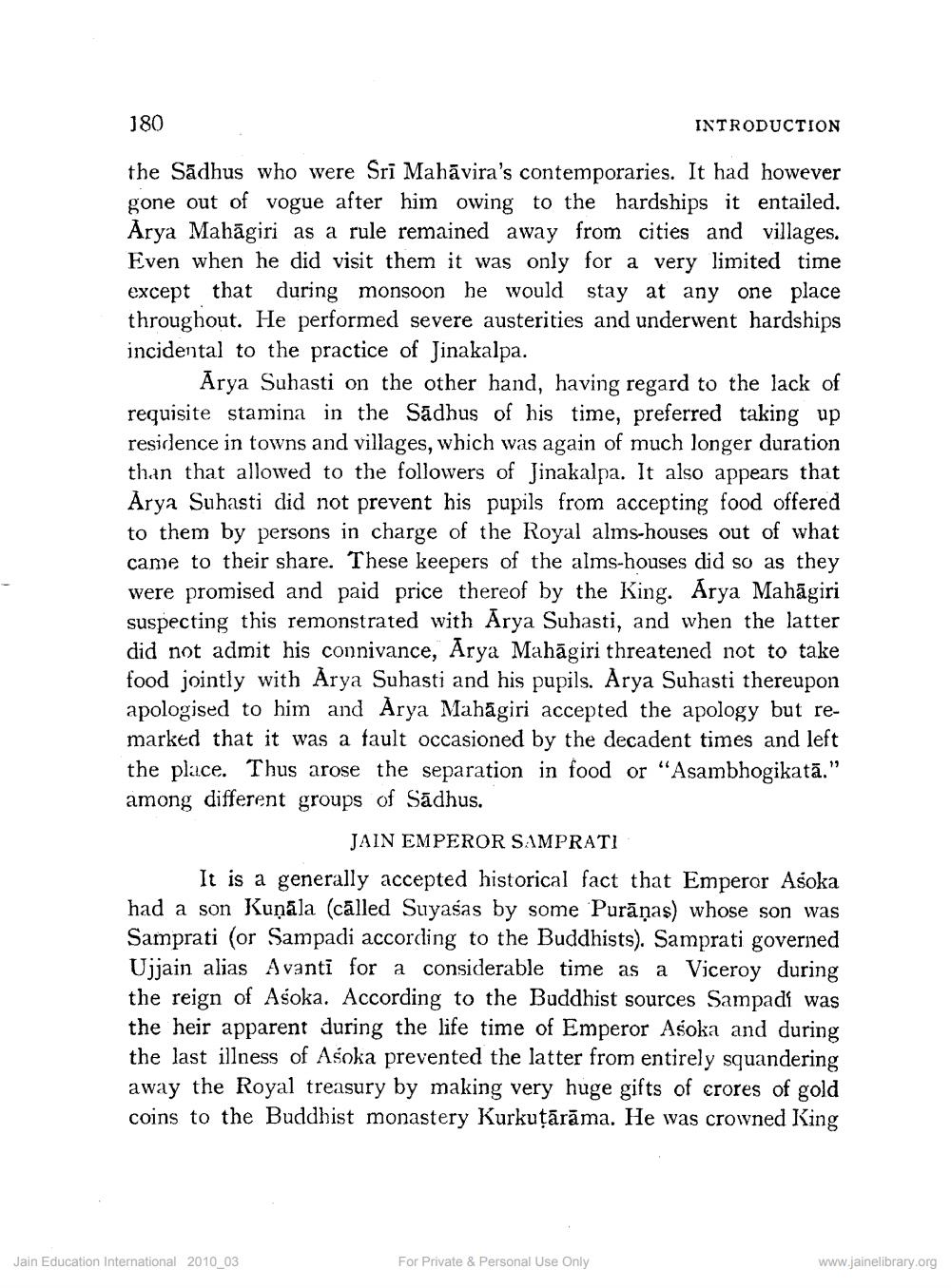________________
180
the Sadhus who were Sri Mahāvira's contemporaries. It had however gone out of vogue after him owing to the hardships it entailed. Arya Mahagiri as a rule remained away from cities and villages. Even when he did visit them it was only for a very limited time except that during monsoon he would stay at any one place throughout. He performed severe austerities and underwent hardships incidental to the practice of Jinakalpa.
Arya Suhasti on the other hand, having regard to the lack of requisite stamina in the Sadhus of his time, preferred taking up residence in towns and villages, which was again of much longer duration than that allowed to the followers of Jinakalpa. It also appears that Arya Suhasti did not prevent his pupils from accepting food offered to them by persons in charge of the Royal alms-houses out of what came to their share. These keepers of the alms-houses did so as they were promised and paid price thereof by the King. Arya Mahāgiri suspecting this remonstrated with Arya Suhasti, and when the latter did not admit his connivance, Arya Mahāgiri threatened not to take food jointly with Arya Suhasti and his pupils. Arya Suhasti thereupon apologised to him and Arya Mahagiri accepted the apology but remarked that it was a fault occasioned by the decadent times and left the place. Thus arose the separation in food or "Asambhogikatā." among different groups of Sadhus.
JAIN EMPEROR SAMPRATI
INTRODUCTION
It is a generally accepted historical fact that Emperor Asoka had a son Kuṇala (called Suyasas by some Purāņas) whose son was Samprati (or Sampadi according to the Buddhists). Samprati governed Ujjain alias Avanti for a considerable time as a Viceroy during the reign of Asoka. According to the Buddhist sources Sampadi was the heir apparent during the life time of Emperor Asoka and during the last illness of Asoka prevented the latter from entirely squandering away the Royal treasury by making very huge gifts of crores of gold coins to the Buddhist monastery Kurkuṭārāma. He was crowned King
Jain Education International 2010_03
For Private & Personal Use Only
www.jainelibrary.org




